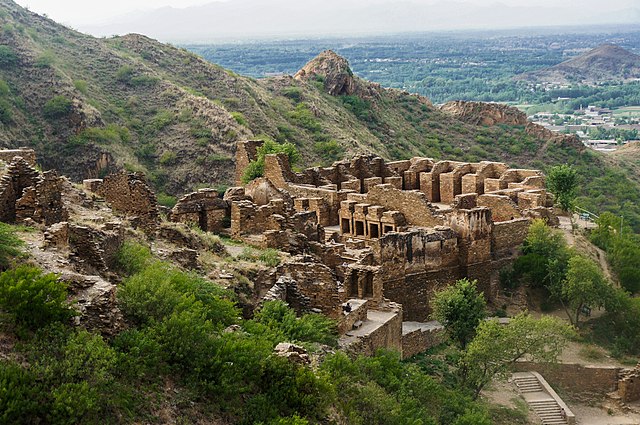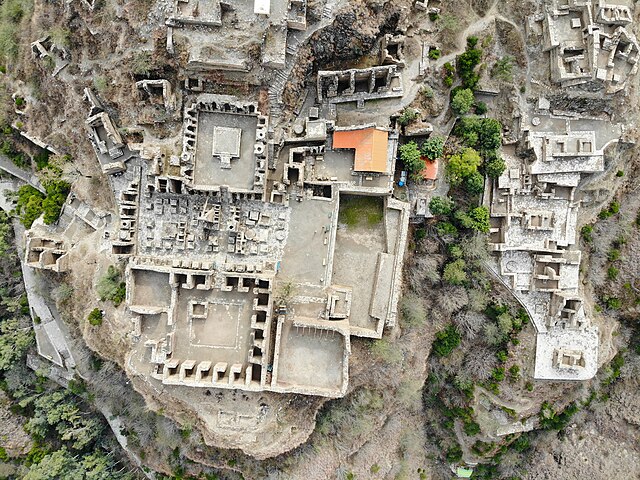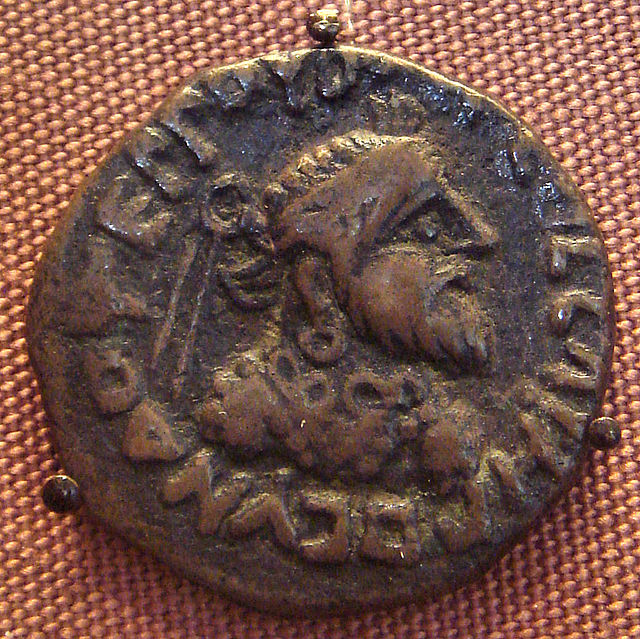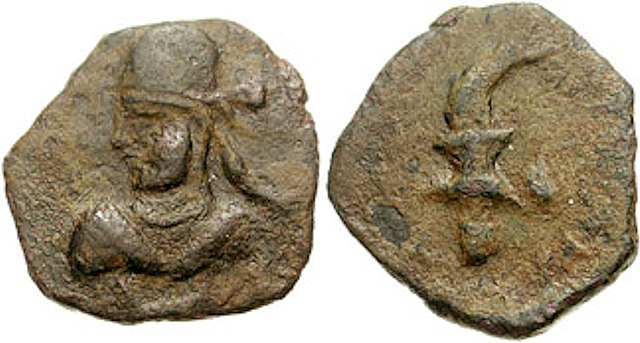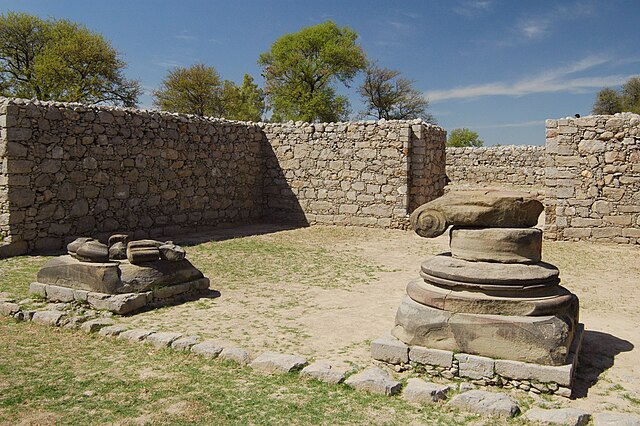Takht-i-Bahi, is an Indo-Parthian archaeological site of an ancient Buddhist monastery in Mardan, Khyber-Pakhtunkhwa, Pakistan. The site is considered among the most important relics of Buddhism in all of what was once Gandhara, and has been "exceptionally well-preserved."
A view of the site's main cluster of ruins
Aerial view of the ruins of the monastery
Statue of the Buddha, Takht-i-Bahi, 2nd–3rd century CE. Schist, H. 980 mm (39 in). Museum für Indische Kunst.
Couple protectors Pañcika and Hariti, Takht-i-Bahi. British Museum.
The Indo-Parthian Kingdom was a Parthian kingdom founded by Gondophares, and active from 19 CE to c. 226 CE. At their zenith, they ruled an area covering parts of eastern Iran, various parts of Afghanistan and the northwest regions of the Indian subcontinent. The rulers may have been members of the House of Suren, and the kingdom has even been called the "Suren Kingdom" by some authors.
Portrait of Gondophares, founder of the Indo-Parthian kingdom. He wears a headband, earrings, a necklace, and a cross-over jacket with round decorations.
Ancient Buddhist monastery Takht-i-Bahi (a UNESCO World Heritage Site) constructed by the Indo-Parthians in Khyber Pakhtunkhwa, Pakistan.
Coinage of Pahares I, Indo-Parthian king of Turan (Circa 160-230 CE). Bearded bust left, wearing Parthian-style tiara. Crude figure of Nike walking right.
The Hellenistic temple with Ionic columns at Jandial, Taxila, Khyber Pakhtunkhwa, Pakistan. It is usually interpreted as a Zoroastrian fire temple from the period of the Indo-Parthians.

